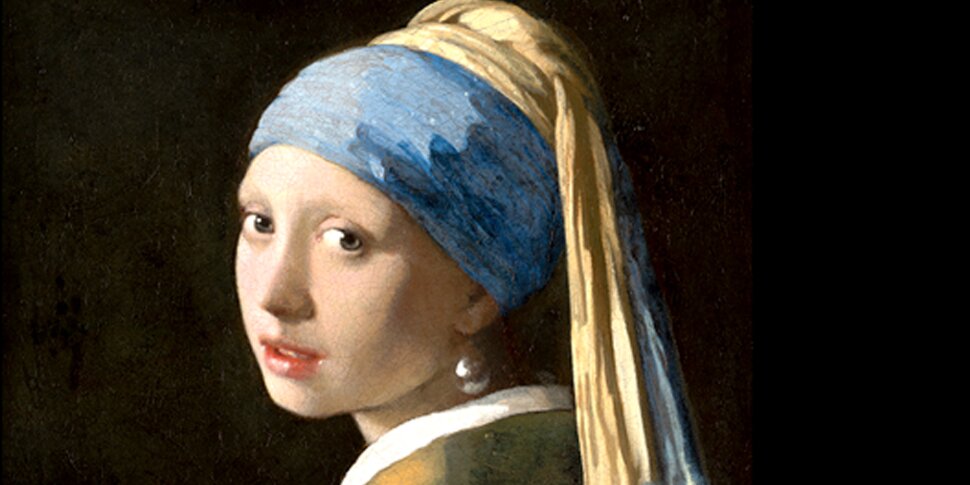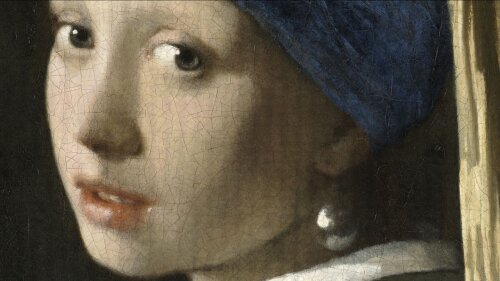Macroscopic and microscopic X-ray diffraction scanning
In-depth research into Vermeer’s Girl with a Pearl Earring involved macro-XRF and macro-XRPD scans
In March 2018, Vermeers iconic painting ''The Girl with the Pearl Earring'' was examined by AXIS in the Mauritshuis Museum in the Hague, the Netherlands.
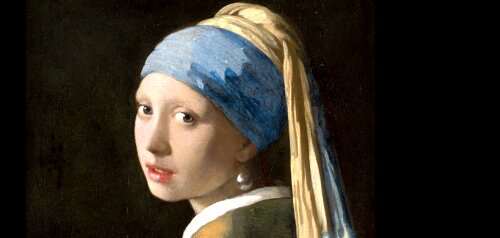
Girl with the Pearl Earring, (1665) Mauritshuis Museum, The Hague, the Netherlands.
This investigation was part of a larger research project called ''Girl in the Spotlight'', instigated by Abbie Vandivere, paintings conservator at the Mauritshuis Museum.
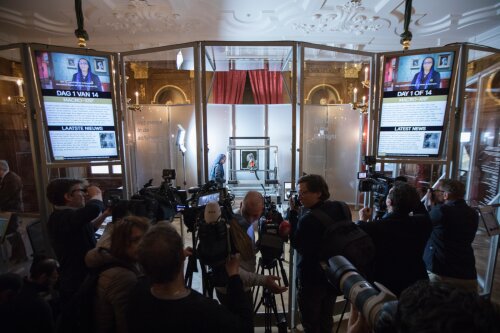
This action started with a lot of interest from the international press and involved the recording of a MA-XRF scan. The latter yields elemental maps of the paintings, as shown below for the case of several chemical elements such as potassium (K), calcium (Ca), iron (Fe) and lead (Pb). In these maps, the location of paint losses can be clearly be seen. Only in a limited number of positions on the painting (such as The Girl's collar, cheek and near her left eye) this is the case.
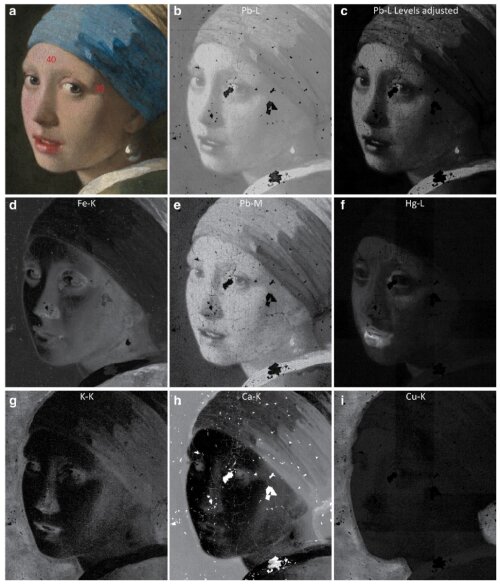
Elemental maps of The Girl's face obtained by MA-XRF.
Macro-level investigation by AXIS: MA-XRPD
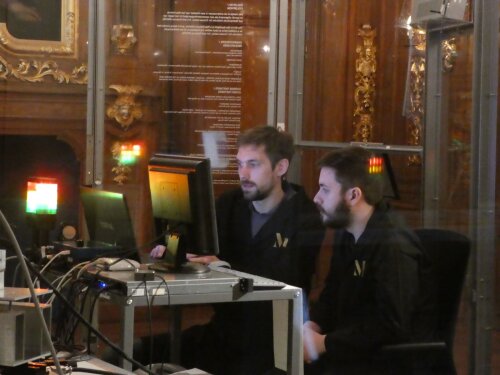
Acquisition of MAXRPD data by Dr. Frederik Vanmeert and Steven De Meyer during in situ scanning in the Golden Room of the Mauritshuis museum.
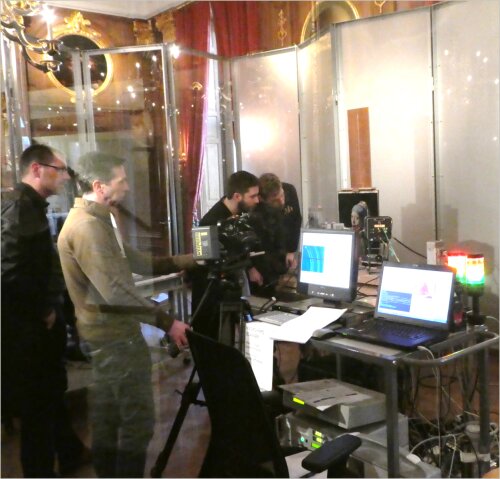
Prof. Geert Van der Snickt, Kurt Kerkhofs (UAntwerp) filming the MA-XRPD measurements performed by Steven De Meyer and Dr. Frederik Vanmeert.
The measurements involve recording an X-ray powder diffraction spectrum at a very large number of positions on the paintings's surface. One of these is shown below, showing the presence of many components.
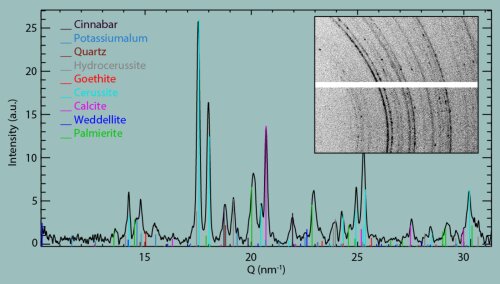
Microscopic level investigation of paint samples
To determine which type of lead white were present in several of the superimposed paint layers, two paint samples were taken and examined at the PETRA-III Synchrotron radiation facility (DESY, Hamburg) with a microscopically small beam of X-rays. At beamline P06 (PETRA micro/nanoprobe), each of the paint layers constituing the two minute flake of paint shown below coud be irradiated separately.
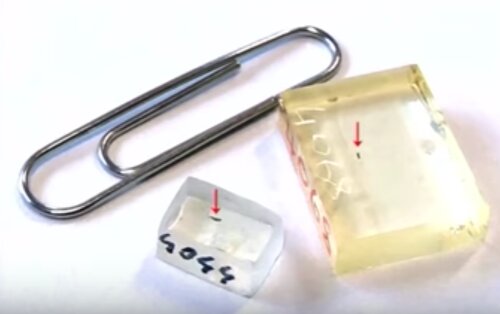
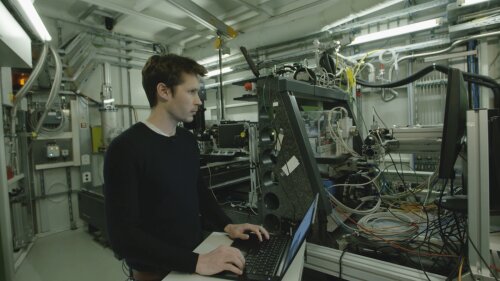
Minuscule paint samples are first embedded in resin blocks and polished to expose the layer buildup of the paint (see below). Dr. Jan Garrevoet (DESY Hamburg) is placing a sample in the P06 X-ray micropprobe endstation of the PETRA-III synchrotron.
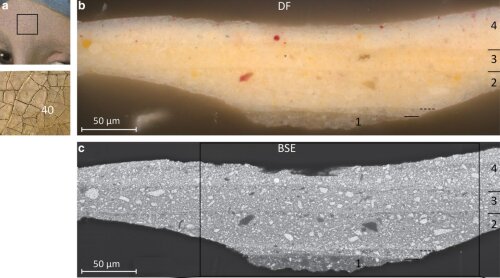
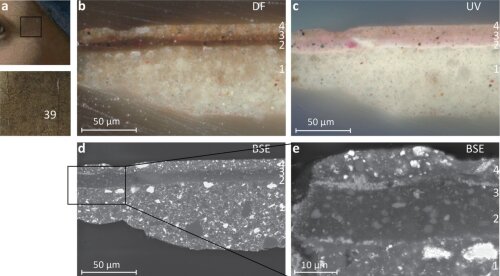
Optical and electron micrograph of two paint samples: (keft) sample #40 (light part of the face); (right) sample #39 (shadowed part of the cheek).
Again X-ray diffraction was employed to determine which crystalline products were present in each paint layer.
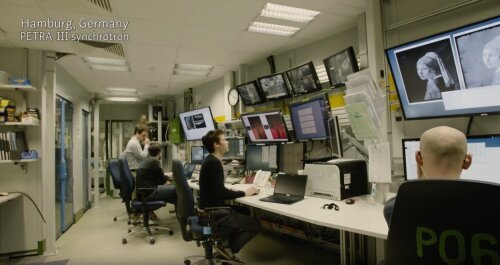
View of the control hutch of PETRA-III X-ray micro/nanoprobre with Ermanno Avranovich, Steven de Meyer (UAntwerp) and Jan Garrevoet (DESY) performing measurements.

Dr. Jan Garrevoet (DESY), Steven de Meyer (UAntwerp) and Dr. Victor Gonzalez (TUDelft) discussing the synchrotron micro-XRPD data.
Girl in the Spotlight and Girl with a Blog
In March 2018, at the Mauritshuis museum in The Hague, The Netherlands, during a 14 day period, an multi-technique investigation of Vermeer's iconic painting 'The Girl with the Pearl Earring' (c. 1665) took place, called 'The Girl in the Spotlight'. a joint project of several insitutions within the framework of the Netherlands Institute for Conservation, Art and Science (NICAS).
From 26 February until 11 March 2018, an international team of researchers from partner institutions Rijksmuseum Amsterdam, The Cultural Heritage Agency of the Netherlands (RCE), Delft University of Technology, the University of Antwerp (AXIS), and the National Gallery in Washington DC carefully examined the painting using state-of-the-art scientific techniques. All these activities took place in the Golden Room of the Mauritshuis, a unique opportunity for visitors of the museum to watch the work in progress in real time during the museum’s opening hours.
At the start of the project, Abbie Vandivere, project coordinator, was interviewed by Springer about the blog she wrote called 'Girl with a blog' on the entire investigation.
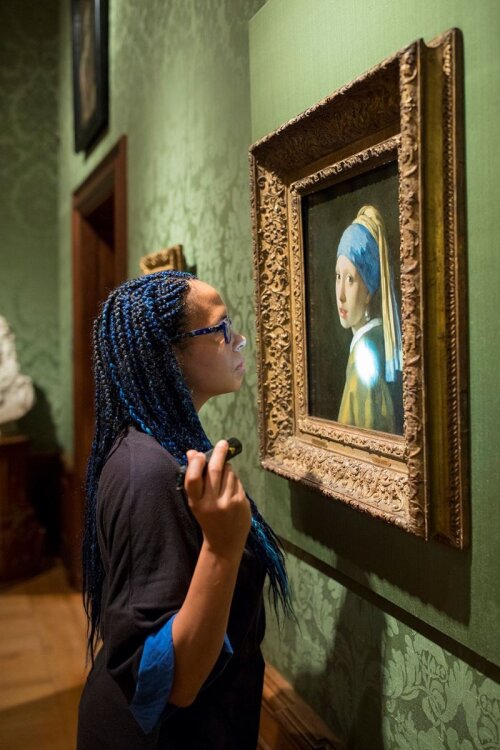
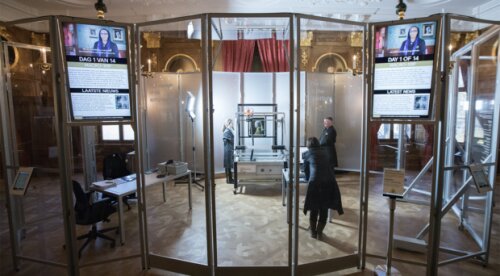
Press Conference - 28 April 2020
On 28 April 2020, the Mauritshuis museum hosted a e-press conference on the results of the investigation of 'The Girl'.
Results and publications
Graphical overview of main results
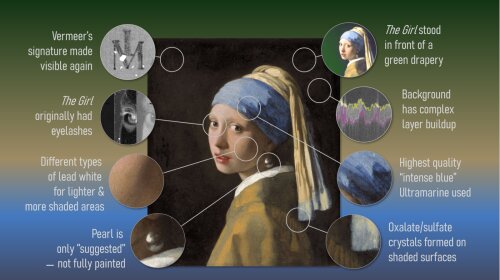
Up to now, 11 scientific papers were published describing the results of the investigations done in March 2018 and in the months that followed.
On 30 July 2019, a paper on The Girl was accepted in the prestigeous journal Science Advances and published in its August issue.
In the period 29 August 2019-March 2020, in the journal Heritage Science, a collection of 10 scientific papers, on which two were co-authored by AXIS authors, appeared.
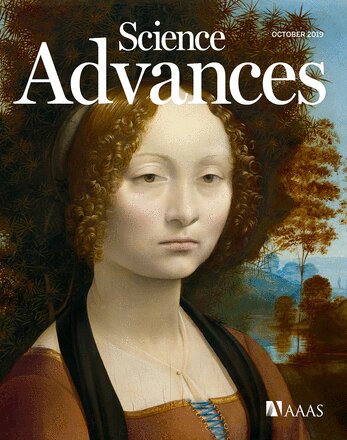
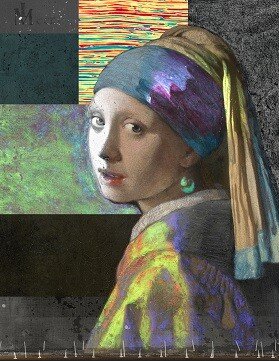
Science Advances paper
S. De Meyer, F. Vanmeert, R. Vertongen, A. Van Loon, V. Gonzalez, J. Delaney, K. Dooley, J. Dik, G. Van der Snickt, A. Vandivere and K. Janssens, Macroscopic x-ray powder diffraction imaging reveals Vermeer’s discriminating use of lead white pigments in Girl with a Pearl Earring. Science Advances 5 (2019)
In this paper, we describe how non-invasive XRPD macro-imaging was combined with microscopic XRPD mapping of minute paint samples originating from two strategically chosen locations: one situated on the forehead of the Girl and one in the shadows of her cheek. Four different subtypes of lead white were identified using XRPD imaging at the macroscopic and microscopic scale, implying that Vermeer was highly discriminatory in his use of lead white.
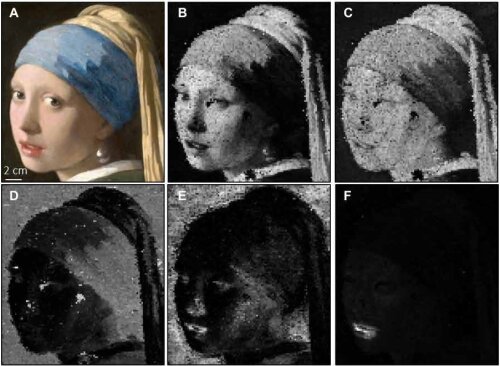
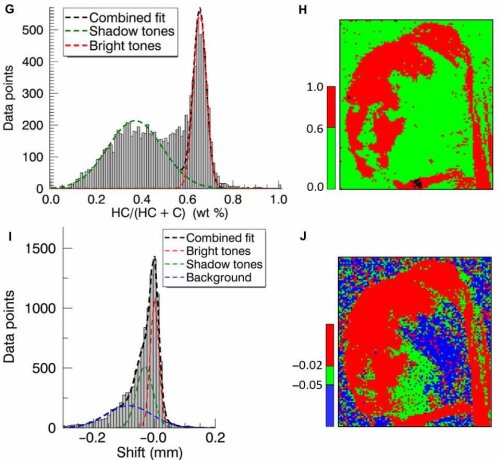
The lead whites employed by Vermeer are composed of two main components: hydroccerussite (HC, 2PbCO3.Pb(OH)2) and cerussite (C, PbCO3).
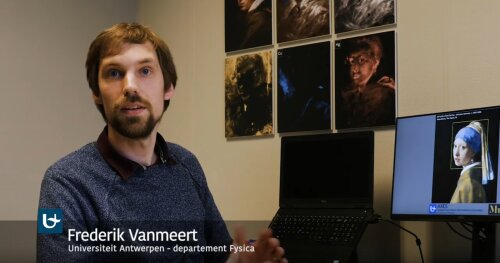
Dr. Frederik Vanmeert, explaining some of the results obtained.
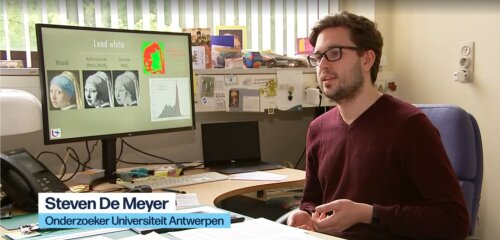
Steven de Mever, pointing out the difference in the hydrocerussite and cerussite distributions.
In the 3D map shown below, the concentration of HC within the lead white in each image pixel is correlated the difference in average depth below the surface of HC and C. In the HC-rich areas of the painting (false-orange) C and H are homogeneously mixed; on the other hand in the shadowed areas (low in HC, false green/blue) the HC is situated deeper below the surface than the C. The latter is present in a thin, superimposed layer called a scumble. In total four different types of lead white were encountered in The Girl.
The findings demonstrate that Vermeer was very much aware of the existence of various grades and types of lead white and their properties. As such, he can be considered to be a material scientist avant-la-lettre. He also knew exactly how to use them to achieve the optical/painterly effects he sought to achieve.
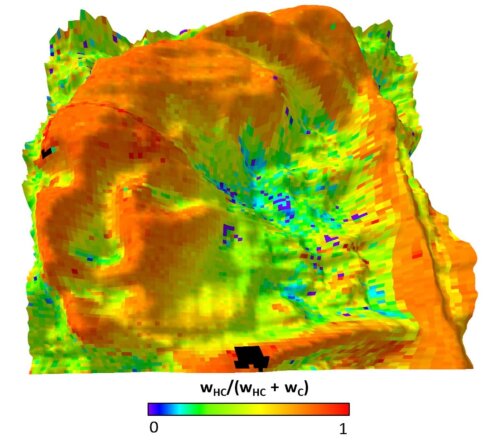
Heritage Science papers
- Abbie Vandivere, Annelies van Loon, Kathryn A. Dooley, Ralph Haswell, Robert G. Erdmann, Emilien Leonhardt and John K. Delaney, Revealing the painterly technique beneath the surface of Vermeer’s Girl with a Pearl Earring using macro- and microscale imaging. Heritage Science 7 (2019) 64.
- Abbie Vandivere, Jørgen Wadum, Klaas Jan van den Berg and Annelies van Loon, From ‘Vermeer Illuminated’ to ‘The Girl in the Spotlight’: approaches and methodologies for the scientific (re-)examination of Vermeer’s Girl with a Pearl Earring. Heritage Science 7 (2019) 66.
- Steven De Meyer, Frederik Vanmeert, Rani Vertongen, Annelies van Loon, Victor Gonzalez, Geert van der Snickt, Abbie Vandivere and Koen Janssens. Imaging secondary reaction products at the surface of Vermeer’s Girl with the Pearl Earring by means of macroscopic X-ray powder diffraction scanning. Heritage Science 7 (2019) 67.
- Abbie Vandivere, Annelies van Loon, Tom Callewaert, Ralph Haswell, Art Ness Proaño Gaibor, Henk van Keulen, Emilien Leonhardt and Joris Dik, Fading into the background: the dark space surrounding Vermeer’s Girl with a Pearl Earring. Heritage Science 7 (2019) 69.
- Willemijn S. Elkhuizen, Tom W. J. Callewaert, Emilien Leonhardt, Abbie Vandivere, Yu Song, Sylvia C. Pont, Jo M. P. Geraedts and Joris Dik, Comparison of three 3D scanning techniques for paintings, as applied to Vermeer’s ‘Girl with a Pearl Earring’. Heritage Science 7 (2019) 89.
- Annelies van Loon, Abbie Vandivere, John K. Delaney, Kathryn A. Dooley, Steven De Meyer, Frederik Vanmeert, Victor Gonzalez, Koen Janssens, Emilien Leonhardt, Ralph Haswell, Suzan de Groot, Paolo D’Imporzano and Gareth R. Davies. Beauty is skin deep: the skin tones of Vermeer’s Girl with a Pearl Earring. Heritage Science 7 (2019) 102.
- John K. Delaney, Kathryn A. Dooley, Annelies van Loon and Abbie Vandivere, Mapping the pigment distribution of Vermeer’s Girl with a Pearl Earring. Heritage Science 8 (2020) 4.
- Abbie Vandivere, Jørgen Wadum and Emilien Leonhardt, The Girl in the Spotlight: Vermeer at work, his materials and techniques in Girl with a Pearl Earring. Heritage Science 8 (2019) 20.
- Annelies van Loon, Alessa A. Gambardella, Victor Gonzalez, Marine Cotte, Wout De Nolf, Katrien Keune, Emilien Leonhardt, Suzan de Groot, Art Ness Proaño Gaibor and Abbie Vandivere, Out of the blue: Vermeer’s use of ultramarine in Girl with a Pearl Earring. Heritage Science 8 (2020) 25.
- Abbie Vandivere, The technical (re-)examination of Vermeer’s Girl with a Pearl Earring. Heritage Science 8 (2020) 26.
High resolution 2D and 3D microscopy
Hirox Europe, one of the partners in the Girl in the Spotlight action, has prepared an interactive website on which it is possible to explore the painting in full (two dimensional) detail. In addition, a website with 3D information is also available.
